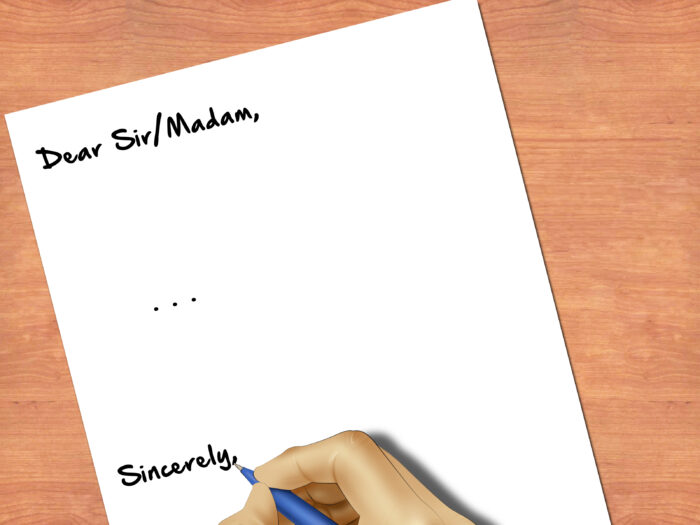
When writing an email, we often think that closing is the easiest part. Whether we end our messages with “Kind regards,” “Sincerely,” “ Thank you in advance,” or “Take care,” it only takes a second, and we probably don’t give it too much thought.
But do email sign-offs even matter? And if so, is “best” really best?
Why does any ending need to be perfect?

Email sign-offs are important, especially for business emails. How we end our letters can make a huge difference.
If we close emails properly, the chances of getting a response increase. If we don’t, we can hardly expect anything else rather than getting our email moved to the trash folder.
If you like examples, here are a few good ones.
Example with an improper closing:
Imagine that you received an email with a very attractive offer. You are intrigued. Perhaps you want to know more or even almost ready to make a deal right now.
You are in a rush to read the email to the end and finally find out who you have to deal with, and if you can trust the sender.
Perhaps he should have signed his email correctly and provided all the necessary information at the end. But here you see that he only signed the email as “John” and wished you a nice day.
You may still be interested in this offer. But why should you trust this John? Perhaps you are persistent enough to find out who this John is, but why didn’t he even bother to give you contact information so that you don’t waste time googling for his company?
If you are a busy professional, then the chances are you have no time to google. You are only wondering, “Who on earth is John?” and decide to move the email to your trash folder.
Example with a proper closing:

Now imagine that John signed off his email not only with his first name but also with the last name. On top of that, he used a professional email signature like Newoldstamp, in which he included his phone number, website, links to social networks, and even added his photo.
Of course, you immediately recognized John, whom you met at the summer conference. You think, “Ah, it’s John from XYZ Corporation. I can trust this guy,” and hit the “Reply” button immediately to find out more about the offer described in his email.
What an email ending needs

When signing off your email, pay attention to the following things:
- Clear conclusion
Many people get used to sharing gratitude to the recipient for reading in the last line of the email, but often such emails lack the conclusion that sums everything up or gives clear directions.
A good closing line might look like this: “Again, please let me know if you have a few minutes to meet next week. We would be excited to discuss further ways of cooperation with you. Thank you.”
In this way, the recipient can quickly glance at the bottom of your email to remind themselves what it was about. Maybe they will get back to this message of yours in a day or two. So, your addressee wouldn’t want to read everything all over again.
In addition to just being polite, your email signature will have a much higher chance of being noticed.
- Request or call to action
The easier you make it for the recipient to understand what you want them to do, the more likely they will do so. Instead of making people guess, try to give them the answer with a clear call to action (CTA).
A good closing line with a call to action might look like this:
“Download a new eBook,” “Buy this rare CD online today and get 10% off for your next order,” or “See all services.”
Tip: This is a perfect case when you can benefit from using a professional email signature. You just need to place a prominent call to action button on your signature to make your audience notice it easier.
- Further steps the recipient needs to make
The practice with calls to action is good when you require one action at a time. In case you need the recipient to take several steps, in your conclusion, tell them what to do.
For example,
“Thank you in advance for taking the time to review my report. Please send me your comments no later than Friday, April 19th.”
How to end emails professionally?
As you may already understand, an email signature is one of the best options to finish your email professionally.
- Use an email signature
Think of it as an electronic business card and include all the necessary information your customers or potential business partners would like to know. If you have no email signature yet, be aware that there is a wide range of tools that will let you create free email signatures. An example of this kind of tool is Malerlite. You can read the Malerlite brand review at bestemailmarketingsoftware.com.
- Make your signature visually appealing
Don’t use too many fonts, colors, and images. It doesn’t look professional. Try to keep it simple and neat.
- Include ways of contacting you
Provide the recipient with alternative ways to contact you as some people prefer phone or social media over email.
- Add relevant CTA links or buttons
Your email signature is a perfect place to add a call to action button or any other important link. For example, if you own a blog, you can add a call for engagement like the “Read my new blog post” or “Go to blog” buttons.
Conclusion

In the business world, we are trying to develop or maintain a relationship with the people we email. And just as we would normally not end a spoken conversation without saying goodbye, we can’t do it with email (except we know the recipient very well). However, saying “Goodbye,” or “Best regards” is no longer enough, especially when we try to make the right impression or want the recipient to take a specific action after reading our email. This is when we can benefit from using email signatures, which can help finish emails more professionally and be on-brand. Remember, how we end our emails can make a huge difference.
















